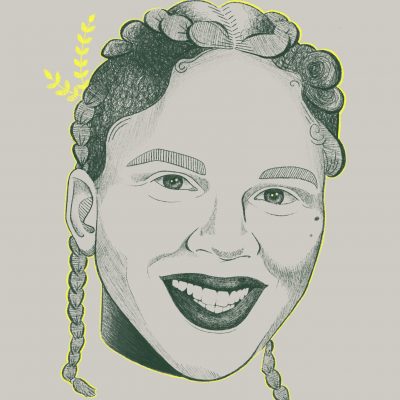Fire, Water, Air, Earth & Children: Exploring the four elements with a sense of wonder at the University of Minnesota Child Development Laboratory School
Sheila Williams Ridge
As children develop their unique identities, it is important that they see themselves in nature and in relationship with the world around them. At the University of Minnesota, Twin Cities campus, students have the opportunity to engage at the Lab School in a number of ways, two primary ways are through the course Nature Based Learning in Early Childhood (CPSY 1301) or Student Teaching in Early Childhood (CPSY 5281). The Lab School program for young children ages two to five years old has moved mostly outdoors due to COVID safety, but we have also found a place of great joy, enhanced learning, and deeper connection with our community.
Our hope is that this relationship with the natural world alongside the human-built community will help children develop foundational positive attitudes toward the environment and develop behaviors that lead to action to protect and preserve the world around them. At the same time we hope University students who are thinking about children in their personal or professional lives, will gain valuable skills that will help young children build a foundation for a meaningful relationship with the natural world.
FIRE
Often children don’t have many early experiences with fire in our current society, but we have evolutionarily been raised near fire and it naturally captivates our interest. Educating preservice teachers on how to safely navigate experiences with fire and young children is important for the protection of young children, but also the comfort of the students leading these experiences. At the lab school, student teachers first learn by observation, formal training, and then by implementing experiences with young children.

At the Laboratory School children are able to get comfortable with fire and fire safety. Children help prepare the fuel, ask questions, enjoy the warmth of the fire, and help extinguish it. University student teachers help facilitate these interactions as they become more comfortable with the practice. We provide training and mentoring as we prepare to have fires with young children. Near the children’s feet you may notice a faint yellow chalk line, that is the safety line to help children remember where to stand while there is an active fire.
ASKING QUESTIONS ABOUT FIRE
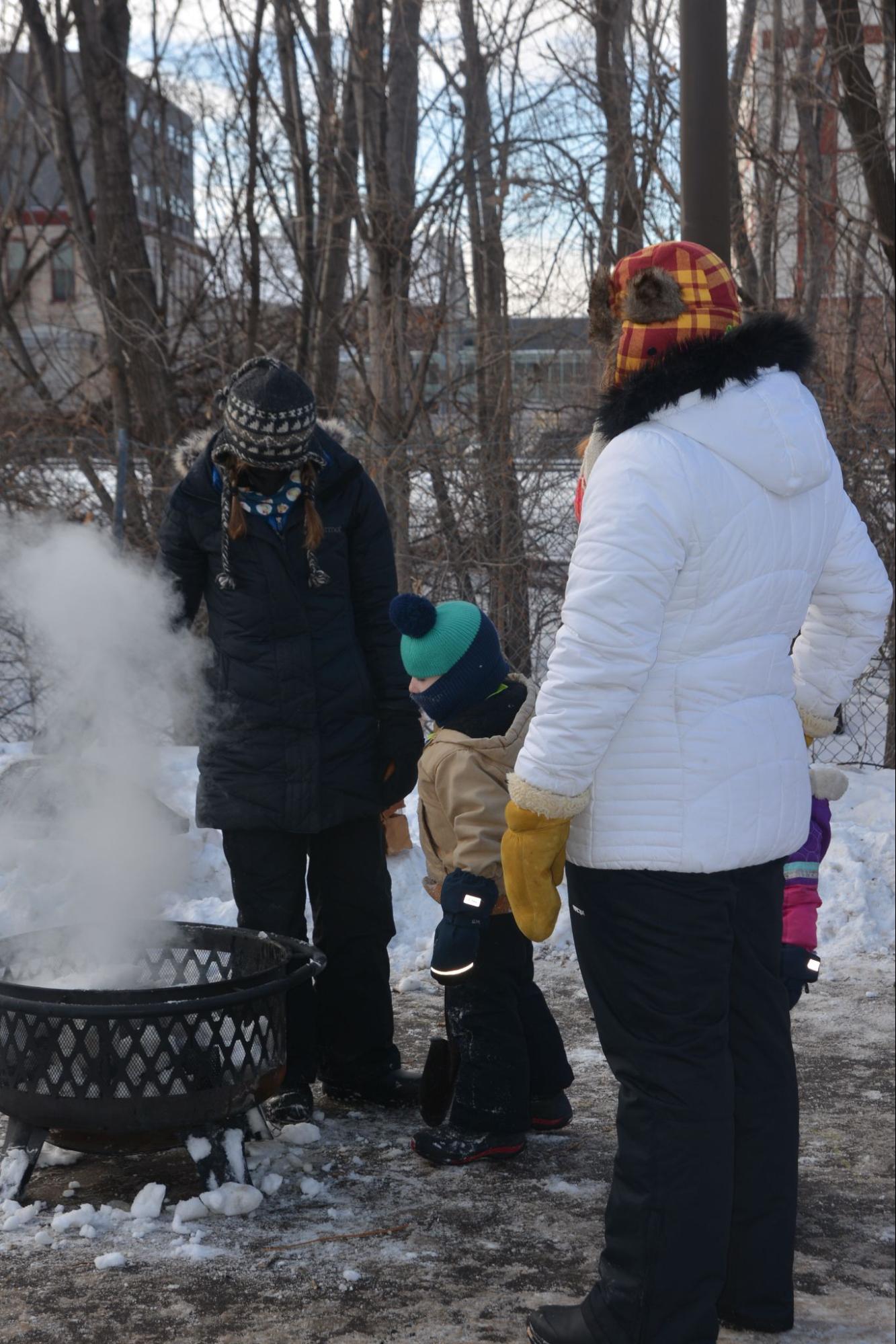
A University student looks on as the teacher and child work to add snow to the fire. As University students and children get more comfortable with experiences around the fire, they can take more responsibility. The initial experiences are structured to allow lots of time for asking questions and moving through the process slowly for all of our students.
WATER
Children have a natural affinity for water, whether it is in the sink, in a puddle, at the pool, or on a beach, it captivates their bodies and minds and often fills them with delight. With these early interactions with water, we hope that it will also capture their hearts and will help them understand how precious and critical clean water is to all life on earth.
WATER & SNOW
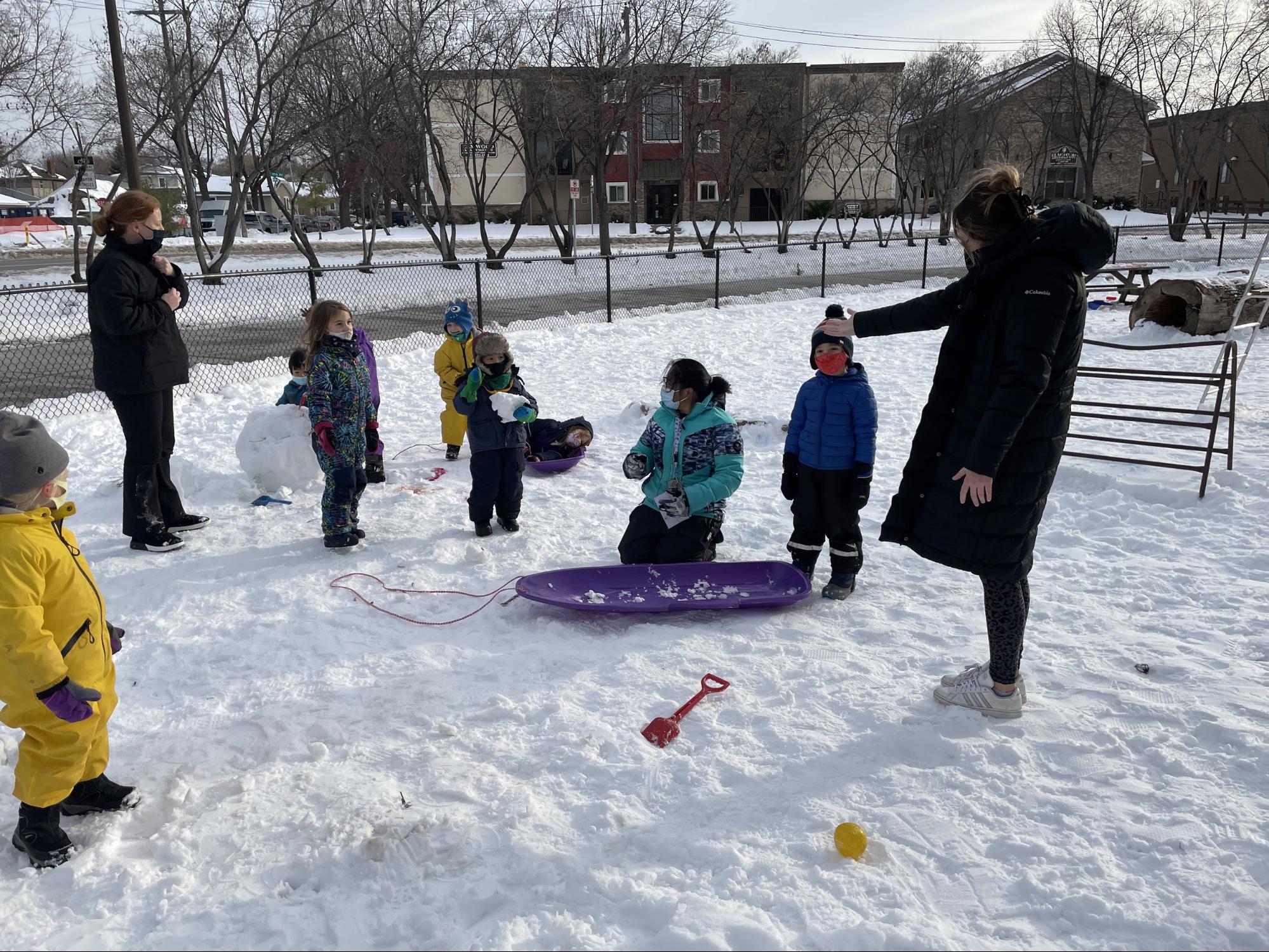
University students enrolled in CPSY 1301 plan curriculum activities that focus on nature-based learning in early childhood. Students choose a specific developmental domain as well as a particular topic. In the photo the student is engaging the children in a movement song about nature. Because the majority of the school day is spent outdoors, all of the curriculum topics should be able to be taught in the outdoor classroom in a variety of weather often embracing water in its many forms.
WATER COLOR
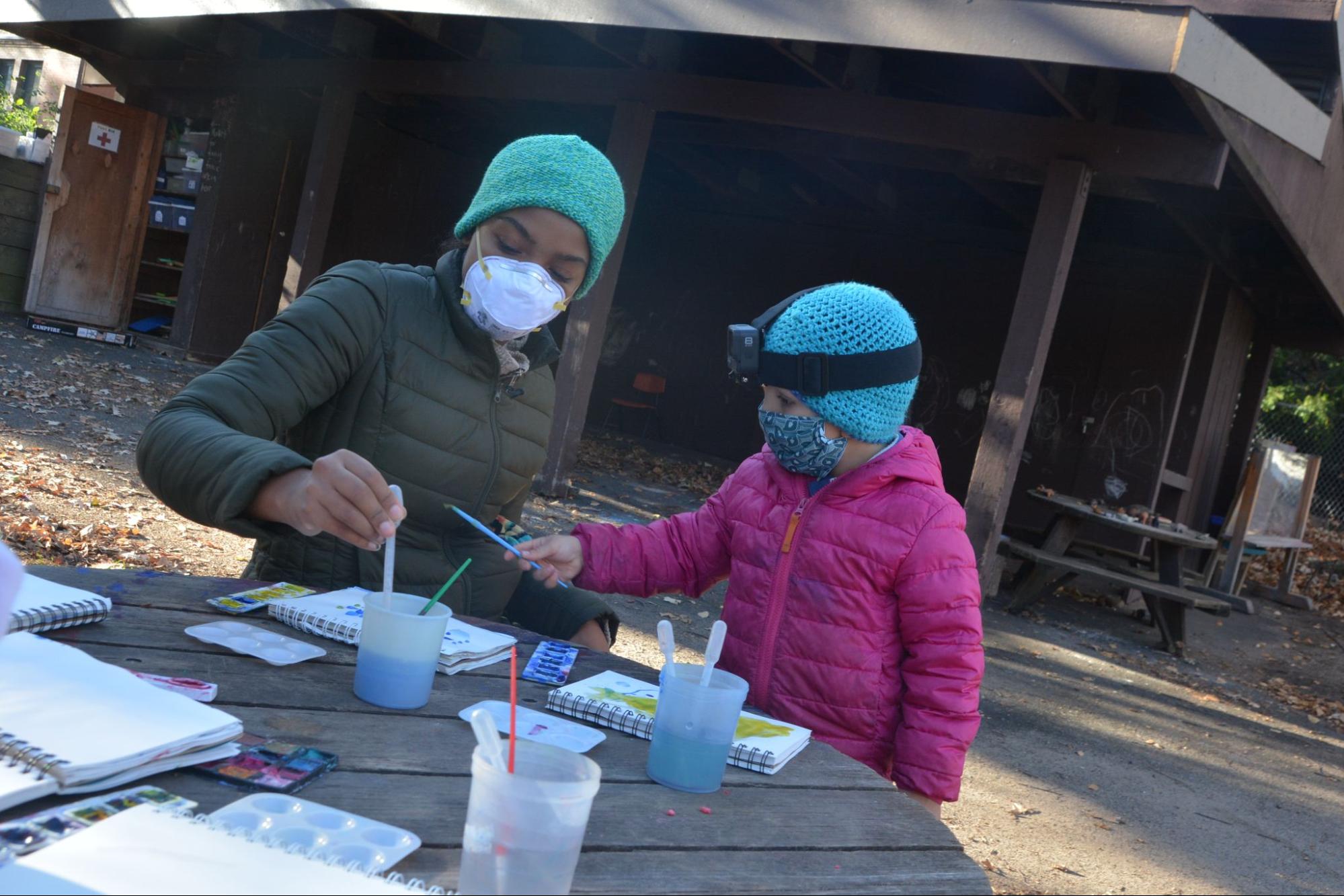
When exploring with water, teachers will often use a variety of tools to help children explore the principles of water. In this photo you see pipettes and paint brushes being used side by side for art activities. These tools give children opportunities to be creative and explore the properties of water through play.
AIR
Air largely goes unnoticed until it is windy or dirty. Experiences enjoying the fresh air, where children can interact with the atmosphere around them and find pleasure in its sustenance is something we hope to encourage throughout our day. The importance of healthy air is explored through readings in CPSY 1301, especially thinking about the inequities toward communities of color throughout the United States and around the world. Healthy air directly impacts the present and future health of young children.
SEEING AIR
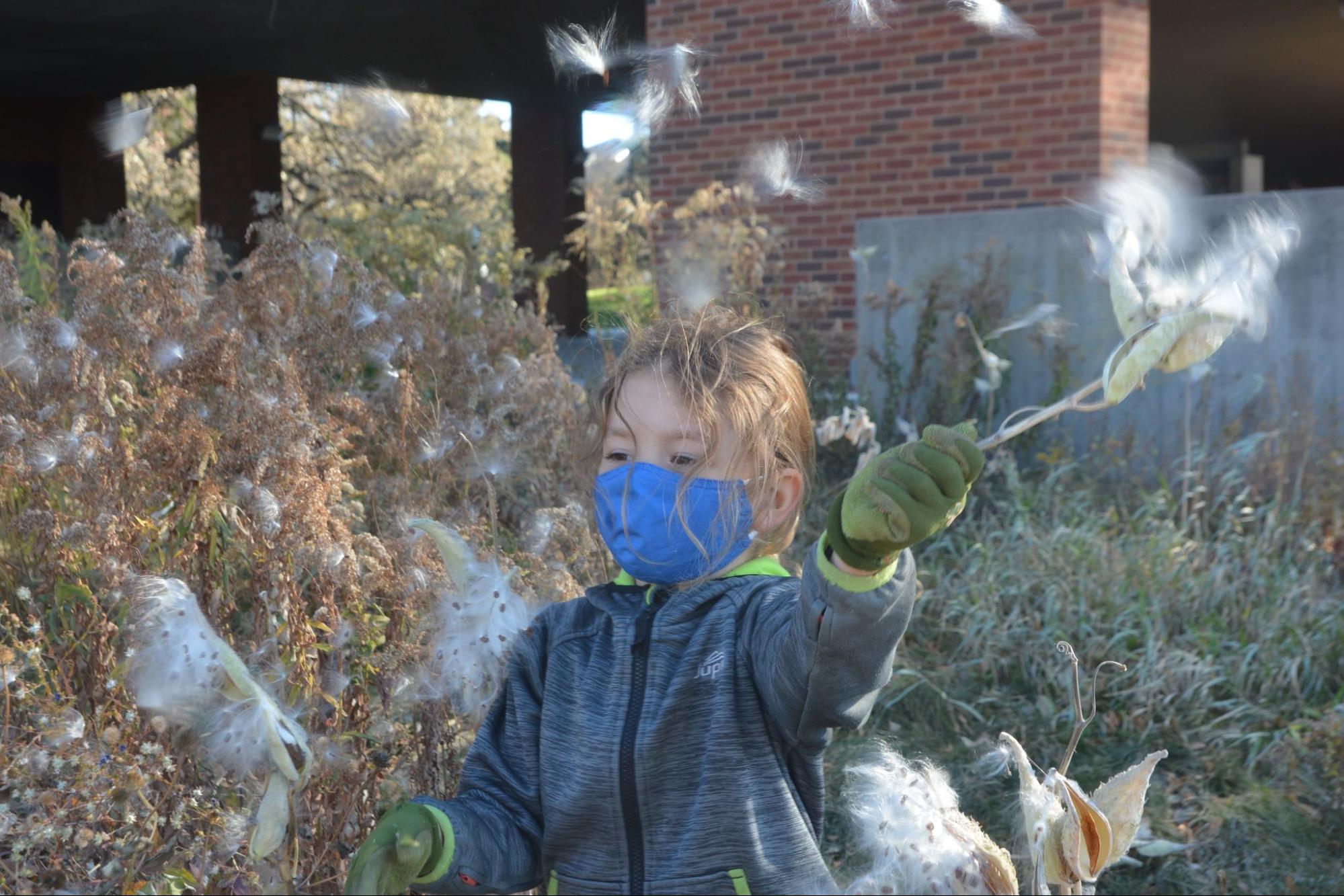
A child waves a milkweed stalk in the early fall watching the seeds disperse through the environment. It’s early in the semester, so the lead teacher demonstrates to the student teacher how to ask inquiry-based questions to the children to extend their understanding of the elements around them including the air, the seeds, and the drying prairie plants. Many questions begin with “what do you notice about…”
AIR & TIME
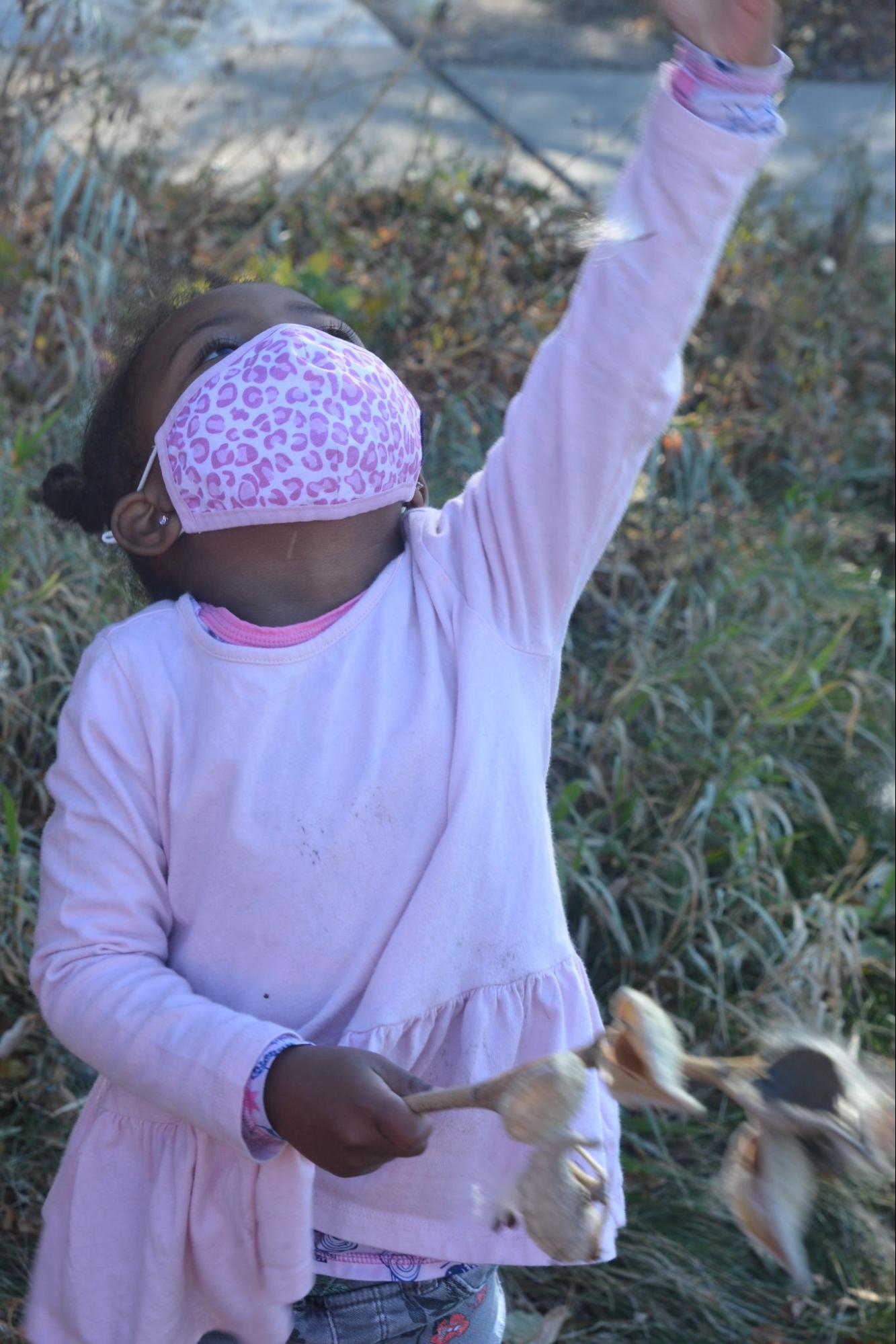 Giving children plenty of time to experiment with their world is incredibly important and rewarding work. In the photo the child emptied the milkweed pods by one or two seeds at a time. Throwing them above their head and slowly watching them float to the ground. These are the foundations of good science learning- observation, replication, and making theories about why things change with different factors.
Giving children plenty of time to experiment with their world is incredibly important and rewarding work. In the photo the child emptied the milkweed pods by one or two seeds at a time. Throwing them above their head and slowly watching them float to the ground. These are the foundations of good science learning- observation, replication, and making theories about why things change with different factors.
EARTH
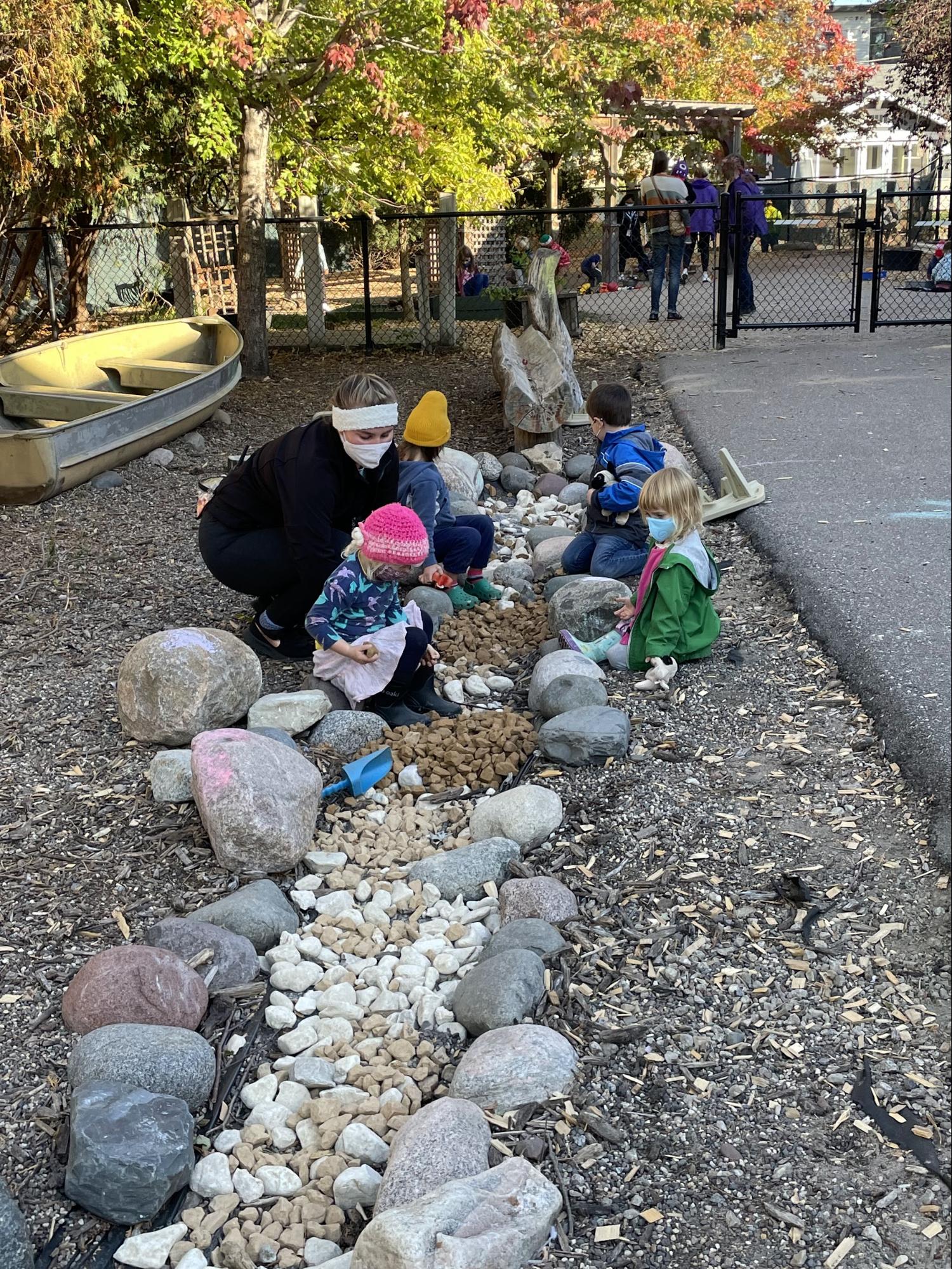 Children dig into the earth with joy and enthusiasm. They search for life, treasures, or sometimes just dig to dig. Often preservice teachers shy away from children engaging directly with the earth, especially with mud and soil. Experiences at the Lab School give University students opportunities to have direct experiences in the earth with young children embracing sand, soil, mud, and rocks.
Children dig into the earth with joy and enthusiasm. They search for life, treasures, or sometimes just dig to dig. Often preservice teachers shy away from children engaging directly with the earth, especially with mud and soil. Experiences at the Lab School give University students opportunities to have direct experiences in the earth with young children embracing sand, soil, mud, and rocks.
Suggested Resources
- Environmental Kinship Guidebook by Amanda Higgens, Anne Meade,Claire Warden, Heather Fox, Megan Gessler, and Sheila Williams Ridge
- Fascination with… (Series) by Claire Warden
- Sense of Wonder by Rachel Carson
- Nature-Based Learning for Young Children by Julie Powers and Sheila Williams Ridge
To learn more about the U of MN Lab School program, please visit our website at https://lab-school.umn.edu/
There are opportunities for students throughout the University to observe, conduct research studies, and learn more about child development.

